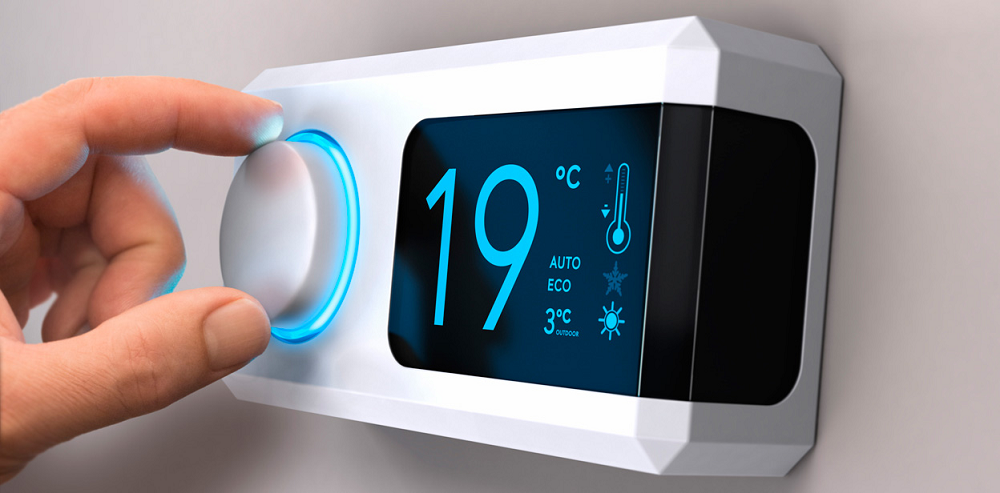What’s the ideal temperature for your home?

This is a more complex question than you might think, because different members of the household can have widely varying set points: some people always feel cold, while others are acutely sensitive to the heat. Reaching a consensus can feel like mission impossible. Nonetheless, believe it or not there is a standard temperature that will keep everyone happy and comfortable.
A perfect balance
According to the experts, the ideal home temperature for the daytime is somewhere between 20° C and 21° C. At night, it’s advisable to turn the thermostat down to 15-17º C in living areas, while bedrooms allow for a little variation. Some people prefer a sleeping temperature of up to 5º C cooler.
However, not all bedrooms need to be heated. You should only turn on the heating in rooms that are isolated from the rest of the home or tend to get chilly, and only after night has fallen.
Bear in mind that the recommended temperature of 20-21º C applies whenever the property is occupied. If vacant, it should revert to night-time levels. That said, it is important to stress that if there’s a baby under your roof, the target temperature should be adjusted to their needs: 22–24º C during the day and 18–20º C at night.
ASHRAE Standard 55
ASHRAE Standard 55 is a well-known benchmark for acceptable levels of thermal comfort in a building, covering a combination of factors. To determine the most comfortable home environment, it considers a number of different aspects such as humidity, thermal radiation and air speed as well as temperature.
It also makes provisions for property users, depending on their levels of activity and what they typically wear. ASHRAE Standard 55 is based on adults who need to perform a certain task for at least 15 minutes in the same room (office work or housework, for instance).
It stipulates that, unless there is a baby to consider, homes should be kept at the recommended temperatures (20–21 °C), regardless of inhabitants’ thermal sensitivity.
The role of humidity in household temperature
It is important to distinguish between temperature and humidity. This is where thermal sensitivity comes in – the term for our perception of warmth or cold, which may bear little relation to the number on the thermostat. Thermal sensitivity is also influenced by the relative humidity of our environment.
How does humidity affect the ideal home temperature? When indoor humidity exceeds 50%, you’ll feel significantly warmer. Below 50%, and you’ll have the impression that the mercury has dropped. Oddly enough, we can feel too hot or too cold at exactly the same ambient temperature.
For example, you might start shivering at 20º C if the humidity dips below 50%. When the humidity rises, that same 20º C temperature can feel uncomfortably warm. But just how humid should your home be? Ideally, you should be aiming for between 40% and 50%.
Humidity not only plays a vital role in regulating indoor temperature – it can also have an impact on your health. If levels drop below 20% and the air dries out, you’ll be more vulnerable to colds and other illnesses due to the propagation of dust mites and bacteria that thrive in drier environments. On the other hand, excessive humidity (above 80%) can also have adverse effects.
How can we boost humidity levels in the home?
Humidity has a key influence on the environmental conditions of our homes. If you live in an inland area with an arid climate, humidity will be in short supply. On the other hand, in coastal towns that get a lot of rain, the air will always be more humid than average.
To adjust humidity levels in your home and achieve the ideal temperature, you need to invest in a humidifier or dehumidifier. Humidifiers boost levels of humidity in the air, whereas dehumidifiers do the opposite.
How can you keep your home at an ideal temperature?
There are a number of steps you can take to ensure your home remains comfortable all year round:
- Instal a digital thermostat: as well as helping you keep an eye on the temperature, digital thermostats are great for saving energy and can dramatically reduce your electricity consumption.
- The thermostat should not exceed 21º C at any point during the day.
- Don’t sleep with the heating on: programme your central heating to kick in just before you wake up and turn itself off before you retire.
- Overnight, the temperature should fall to around 18–20º C, whereas humidity should climb to 60%.
- Make sure your home is well insulated to prevent warm or cool air escaping.
- To maintain the ideal temperature in the summertime, you might want to use some form of air conditioning, but remember to switch it off once the room feels comfortable. Also, choose a system with a stronger air flow and longer range for maximum cooling power.


